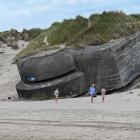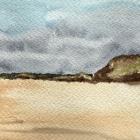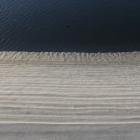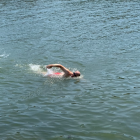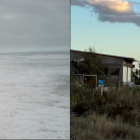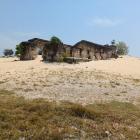Human Pressures on Mobile Coastal Sand Dunes in Manalkadu, Sri Lanka
26 December 2004 was the most tragic day in the recent history of Sri Lanka, as the devasting Indian Ocean tsunami hit almost the entire coastline. This coastal disaster sparked my interest in studying its management. At the time, I was studying wave run-up over coastal structures for my Master’s degree, using self-designed models at the Fluid Dynamics Laboratory. I therefore had the opportunity to lead several research teams to conduct tsunami run-up surveys. During these field visits, I found that hotels and other infrastructure built by cutting into the dunes had been completely destroyed.

Ruins of the Manalkadu Dutch church destroyed by mobile coastal sand dunes in the 1950s.
Ruins of the Manalkadu Dutch church destroyed by mobile coastal sand dunes in the 1950s.
Photo by D. M. R. Sampath
 This work is licensed under a Creative Commons Attribution-NonCommercial 4.0 International License.
This work is licensed under a Creative Commons Attribution-NonCommercial 4.0 International License.
When, in 2024, I visited the mobile coastal dunes of Manalkaadu in the Jaffna district, the abandoned buildings reminded me of the damage caused by the Indian Ocean tsunami. In the 1950s, these dunes had migrated and destroyed the settlements along with an old Dutch church. According to the Coastal Conservation Department, dune mobility was due to unregulated human activities, including the removal of the dunes’ vegetation cover. But, other than declaring the ruined church an archeological reservation, there was no effort to manage this environmentally sensitive coastal zone with its high biodiversity. The area had been identified as a potential “Special Area Management site” in the Coastal Zone Management Plan of 2018, but the proposed program was suspended due to financial constraints in 2022.
Currently, as there is no harbor, hundreds of fishing boats are pulled ashore and launched from the beach into the sea, causing damages to the dunes. Other human pressure on the dunes include grazing by cattle and goats, burning of trees, littering, sand mining, the use of dunes as a cemetery, and driving off-road vehicles. These dunes are still migrating landward, which has prompted the construction of fences to protect the houses and agricultural fields.





